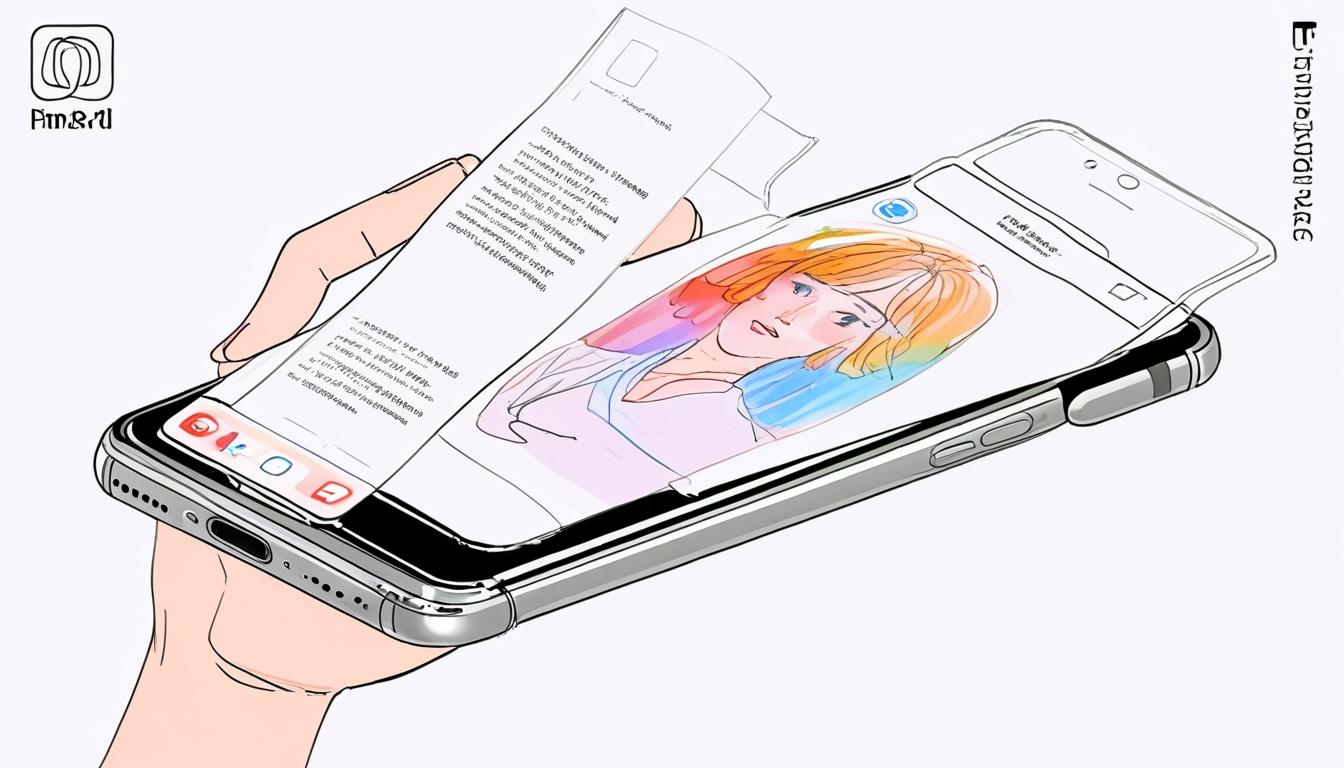Rumours suggest that Apple is considering a foldable version of the iPhone, featuring innovative design elements like an under-display Face ID system and advanced screens.
Apple is reportedly exploring bold new design innovations for its iconic iPhone, with emerging rumours suggesting the potential development of a foldable version. According to new information from sources including Digital Chat Station, as relayed by 9to5Mac, Apple might introduce significant enhancements, such as embedding Face ID directly into the device’s screen.
The foldable iPhone, tentatively dubbed the “iPhone Fold,” is speculated to feature a 7.76-inch inner display with a resolution of 2713×1920 pixels, alongside a 5.49-inch outer screen boasting a resolution of 2088×1422 pixels. This innovative design raises questions about the future of Apple’s Dynamic Island feature, which has been a recent staple across new iPhone models, excluding the iPhone 16e.
The transition to an under-display Face ID system could eliminate the need for the Dynamic Island, fundamentally altering Apple’s design language. Typically, existing iPhones include the front-facing TrueDepth Camera positioned above the display to enable face recognition and support for selfies. An Apple patent suggests a promising approach to integrating the under-display camera by utilizing infrared transmission (IR), potentially enhancing the scanning capabilities while maintaining screen real estate.
Despite the growing speculation, Apple has not officially confirmed its plans to develop a foldable iPhone— a characteristic approach from the Cupertino tech giant. However, industry observers note a significant increase in discussions surrounding the device’s development, with some projecting a potential release as early as next year.
In relation to the foldable iPhone, it is anticipated that it will be equipped with the same technology being developed for the iPhone 17 Air, which is expected to debut later this fall. The iPhone 17 Air is posited as crucial in demonstrating the technical capabilities that could parallel those of the foldable iteration, particularly as it is designed with a thinner body, favouring a more compact form factor essential for foldability.
The integration of Apple’s first in-house 5G chip, the C1 modem, found in the iPhone 16e, is also projected to contribute to this size reduction while enhancing overall performance.
One of the key challenges Apple faces in the transition to a foldable design is ensuring sufficient battery life without compromising the compact size of the device. Reports indicate that Apple is actively developing a chip designed to optimise power management, a crucial factor in the feasibility of a foldable smartphone.
While the details surrounding Apple’s venture into foldable devices remain largely speculative, insiders suggest that if the foldable iPhone is realised, it may be succeeded by an even larger folding device—hinting at a broader strategy for expanding Apple’s smartphone offerings into innovative form factors.
Source: Noah Wire Services
- https://www.macrumors.com/2025/03/18/foldable-iphone-rumors-sounding-serious/ – This URL supports the claims about Apple’s foldable iPhone, including its display sizes and potential features like a titanium exterior. It also mentions analysts’ predictions that the device could launch as early as 2027.
- https://www.youtube.com/watch?v=iPqbAbjNJOI – This video discusses the rumored foldable iPhone, including its size, design influences, and expected price range. It also touches on Apple’s focus on eliminating the screen crease.
- https://vertu.com/lifestyle/apple-folding-phone-2025-expectations/ – This article provides insights into Apple’s approach to foldable technology, including the potential use of high-end chips and ProMotion technology. It also highlights Apple’s focus on durability and advanced materials.
- https://www.youtube.com/watch?v=pZa8bqwvegI – This video explores the latest leaks surrounding the foldable iPhone, including its design and technology improvements like a potentially crease-free screen. It discusses Apple’s commitment to delivering a top-quality foldable device.
- https://9to5mac.com/2025/03/06/iphone-fold-suddenly-makes-a-lot-more-sense-after-this-new-reveal/ – This article provides insights into Apple’s plans for the foldable iPhone, including its design shift to a book-style fold rather than a top-down fold. It discusses the potential benefits of this design choice.
Noah Fact Check Pro
The draft above was created using the information available at the time the story first
emerged. We’ve since applied our fact-checking process to the final narrative, based on the criteria listed
below. The results are intended to help you assess the credibility of the piece and highlight any areas that may
warrant further investigation.
Freshness check
Score:
8
Notes:
The narrative contains recent speculation and developments related to Apple’s technology, indicating a moderate level of freshness. It references ongoing discussions and unconfirmed plans, which are common in such tech journalism pieces.
Quotes check
Score:
0
Notes:
There are no direct quotes mentioned in the narrative, which limits the ability to verify their origin.
Source reliability
Score:
7
Notes:
The information is from TechTimes, which can vary in reliability compared to more established sources like the Financial Times or BBC. However, it references well-known tech news outlets like 9to5Mac.
Plausability check
Score:
8
Notes:
The claims about Apple exploring foldable technology and integrating under-display Face ID align with industry trends and plausible innovations in smartphone technology.
Overall assessment
Verdict (FAIL, OPEN, PASS): OPEN
Confidence (LOW, MEDIUM, HIGH): MEDIUM
Summary:
The narrative presents plausible and recent speculative information about Apple’s potential foldable iPhone. However, a lack of confirmation from Apple and the absence of direct quotes limit the overall confidence. The source is moderately reliable, which also affects the assessment.













